The Hunchback of Notre Dame: How the Book and Movie Differ
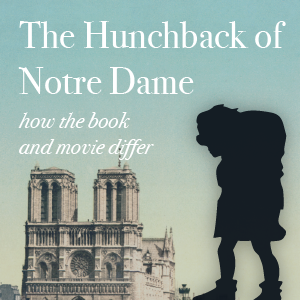
Despite their regular global success, Disney movies aren’t known for being particularly accurate. They are generally neither true to history, like in the case of Pocahontas, nor to their original fictional source (see: The Little Mermaid, Peter Pan, Tarzan and The Hunchback of Notre Dame, among others).
That last one is the focus of our post today.
So how does the Disney animated movie, The Hunchback of Notre Dame, differ from the original book by Victor Hugo, Notre-Dame de Paris?
Obvious Differences
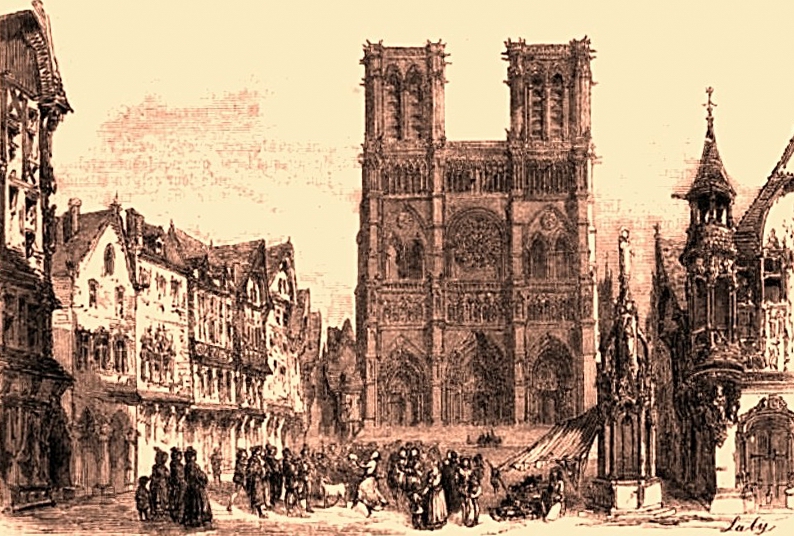
Illustration of the Hunchback of Notre Dame by Victor Hugo, via Wikimedia Commons
Let’s start with the “no-duh” differences between the book and the movie.
The Hunchback of Notre Dame (book)
- Title: Notre-Dame de Paris (though also commonly known as the Hunchback of Notre Dame)
- Date of publication: 1831
- Author: Victor Hugo
- Original language: French
The Disney movie
- Title: The Hunchback of Notre Dame
- Date of release: 1996
- Directors: Kirk Wise and Gary Trousdale
- Original language: English
How the Main Characters Differ
With over 160 years passing between the book’s publication and the movie’s release, there are naturally bound to be some differences. Language, cultural norms, the countries and cultures themselves, the target audiences…really, the two versions share almost nothing except the story itself.
But how much of the story is shared?
Before we look at the plot, let’s take a look at the main characters and how they differ between the original book and the Disney movie interpretation. Just a few of the most important characters are:
- Quasimodo
- La Esmeralda
- Captain Phoebus
- Claude Frollo
- Pierre Gringoire
Quasimodo
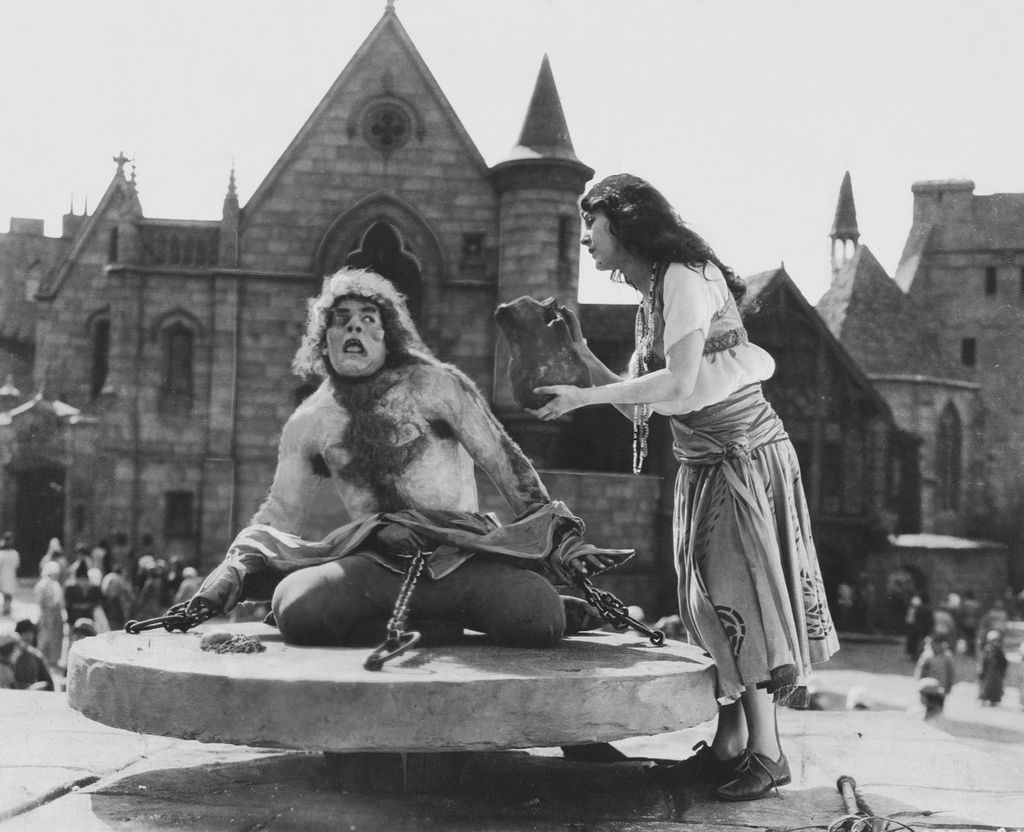
Hunchback of Notre Dame publicity photo from the 1923 movie, by Wallace Worsley, via Wikimedia Commons
In the Disney movie, Quasimodo sings (but of course he does!) and despite his orphaned, shunned upbringing has a generally positive view on the world. He is naive but friendly, kind and keen to experience social interaction. The Quasimodo of the book, though, is mute and deaf. He communicates only through sign language, and he has exiled himself in the bell tower of Notre Dame with his only true love, the bells. Hugo’s Quasimodo is a darker, more brooding character who generally dislikes people.
La Esmeralda
In the book, Esmeralda (actually referred to as La Esmeralda) is a 16-year-old Egyptian French girl who is naive, childish and undeniably beautiful. She wears a magical pendant, symbolic of her virginity, to search for her long-lost mother, and she spends most of the book in a state of lovesick obsession with Phoebus. In the Disney movie, though, Esmeralda could really be any of the Disney princesses: a young adult who is wide-eyed, good-hearted, independent, smart and compassionate.
Phoebus
Much like Esmeralda, Phoebus plays the typical leading man role in the Disney movie. In other words, he is a handsome, noble hero, goofy and loveable with only the best intentions. In the book, on the other hand, Phoebus is a serial philanderer who is only interested in Esmeralda for her youth and beauty. Though engaged to another woman, he leads Esmeralda on until she proves tricky company and then abandons her in the last moments of her life.
Claude Frollo
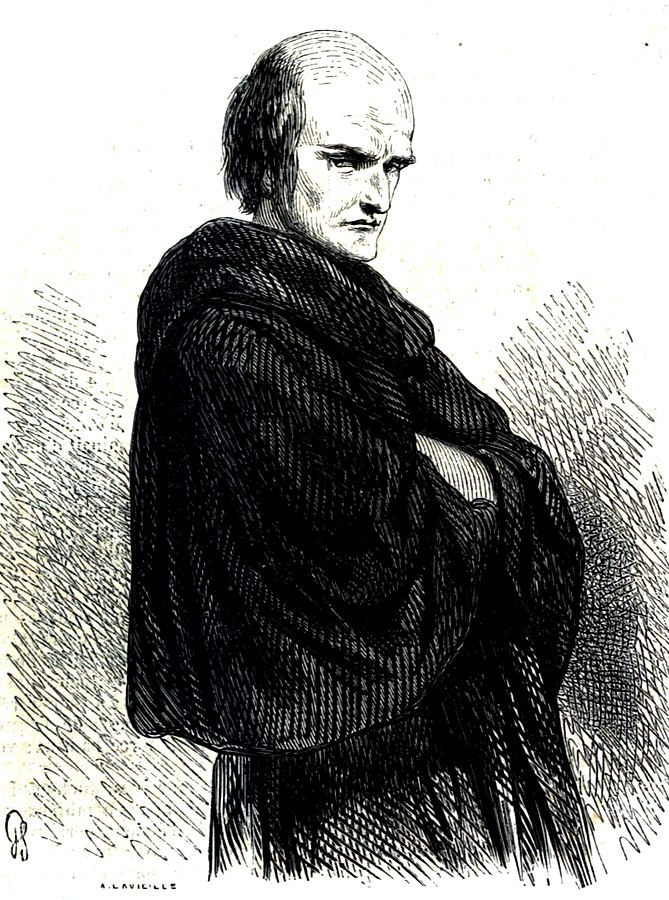
Illustration of Claude Frollo, by Jean Alfred Gérard-Séguin Jacques Adrien Lavieille, via Wikimedia Commons
Claude Frollo is perhaps the most simplified character in the Disney movie. He is clearly the villian: a sinister judge who kills Quasimodo’s mother, raises him out of penance for murder and leads soldier minions into literal witchhunts for gypsies, burning half of Paris in the quest. In the book, though, Frollo is a more nuanced character, a once-pious priest whose lust and vengeance overtake him. Frollo takes Quasimodo in at a young age out of the goodness of his heart, but he also proves capable of heinous and vengeful acts.
Pierre Gringoire
Omitted entirely from the Disney movie, Gringoire is the poet-playwright narrator of the book. He at one point ends up marrying La Esmeralda and then betraying her to Frollo…but that’s another story.
How the Plot Differs
In many ways, Disney pushed the boundaries with The Hunchback of Notre Dame, and some viewers feel that the movie is Disney’s darkest. While the movie does touch on themes of sexuality, power and identity in perhaps more frank ways than previous Disney animations, overall the Disney movie is still much lighter and less morally gray than Hugo’s original.
How Esmeralda and Quasimodo meet
In the book, Quasimodo kidnaps La Esmeralda (most likely at the behest of Frollo), is caught and punished in the stocks. Esmeralda unexpectedly takes mercy on him and offers him water, a moment which opens Quasimodo’s bitter heart and endears her to him forever. He later saves La Esmeralda from the gallows, famously yelling “Sanctuary!” as he swings down on ropes from the belltower. He shelters her in Notre Dame, but she is afraid of him and longs for Phoebus.
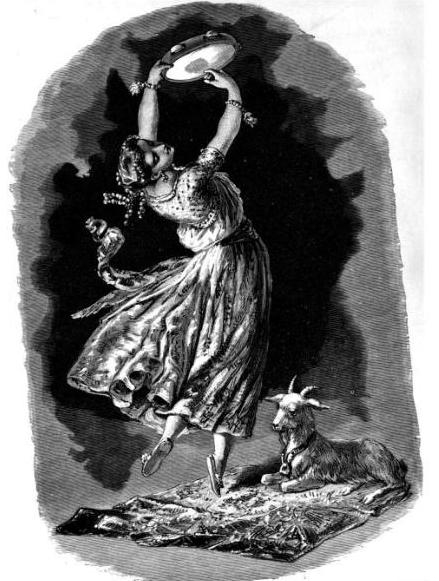
Illustration of La Esmeralda from the Hunchback of Notre Dame by Victor Hugo, via Wikimedia Commons
Except for the kidnapping part, the Disney movie takes a similar trajectory. Esmeralda encounters Quasimodo at the Festival of Fools and takes mercy on him by freeing him from the jeering crowd. After defying Frollo, she chooses to join Quasimodo in the sanctuary of Notre Dame. When she is later captured and tied to the stake for witchcraft, Quasimodo swings down and saves her. The characters bond over Frollo’s harsh treatment, and they share a sort of gentle, genuine friendship.
Esmeralda and Phoebus’ relationship
Just as Disney’s Frollo has been distilled into the epitome of evil, Emeralda and Phoebus’ relationship has been particularly Disney-fied. In the movie, Phoebus becomes smitten with Esmeralda, and when he is ordered to burn down a house where she may be, he defies orders. Frollo sentences him to death, but Esmeralda saves him from drowning. They share a hero-heroine kiss, he later returns to Esmeralda to warn of an attack on her home, and the two are eventually reunited to fight together in the battle at Notre Dame.
The book, on the other hand, has a decidedly more sour interpretation of the couple’s relationship. Infatuated by her beauty, Phoebus meets Esmeralda for a romantic rendezvous but is stabbed by a jealous, stalking Frollo.
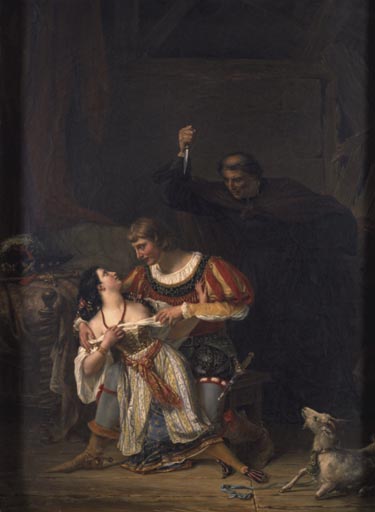
Illustration of Phoebus, Esmeralda, and Claude Frollo by Auguste Couder, via Wikimedia Commons
Frollo blames Esmeralda for murdering Phoebus, who in fact did not die. Deciding that she’s too much to handle and that there many similar women around town, Phoebus never reveals to Esmeralda that he lives and simply decides to stay away. Esmeralda, however, continues to hopelessly love Phoebus. In fact, it’s shouting out his name that gets her caught and taken to fulfill her sentence to hang. (Another plot point missing from the movie entirely is the existence and tragic death of Esmeralda’s long-lost mother, who is reunited with her daughter only moments before her execution.)
How it all ends
The movie and book end in as divergent manners as you’d expect by this point. In the Disney movie, the main characters (Phoebus, Quasimodo, Esmeralda and those talking gargoyles we haven’t mentioned) end up fighting against Frollo at the battle of Notre Dame. Phoebus saves Quasimodo from falling off the ledge, Frollo falls into a fiery pit, and everyone cheers together. In the end, the townspeople who once jeered and threw tomatoes finally see Quasimodo as a real person. Hooray!
In the book, Esmeralda is in fact hung. Phoebus witnesses her execution from his window, where he sits with his wife-to-be. Quasimodo desperately searches for Esmeralda and only realizes she’s been executed when he sees Frollo looking down at the gallows and laughing. Quasimodo pushes Frollo to his death and then disappears completely. Years later a gravedigger finds Quasimodo’s bones wrapped around Esmeralda’s; when he tries to move them, their bones crumble together in a final poignant moment.
Conclusions about The Hunchback of Notre Dame
While the setting and general themes of Hugo’s novel and the Disney movie are similar, it’s clear that much is lost when the novel’s essential darkness, its humanity, is sanitized. Of course, some would argue that much is gained as well. The moral clarity and neatly-tied-up storyline do present a feel-good, family-friendly counterpart to Hugo’s original. Surely the award-winning music doesn’t hurt either.
We could say we prefer the book (and okay, we do), but we also find that it’s endlessly interesting to read, watch, and explore new interpretations of classic literature, not in spite of but because of their stark differences. After all, every remastered version, no matter how simplified or altered, welcomes new dialogue about the original masterpiece—and we love nothing more than talking about our favorite books.
What differences did we miss between Disney’s The Hunchback of Notre Dame and Hugo’s Notre-Dame de Paris? If you want to read more, view the full text of the book on Project Gutenberg, or check out our new Hunchback of Notre Dame text poster.

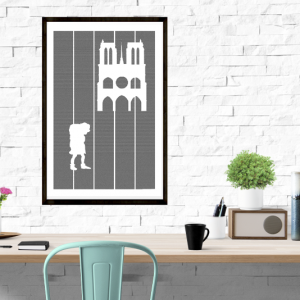

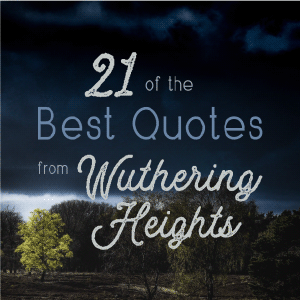
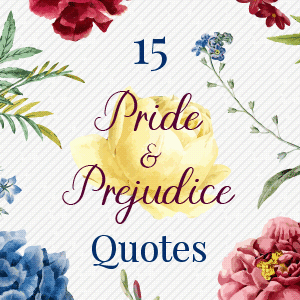
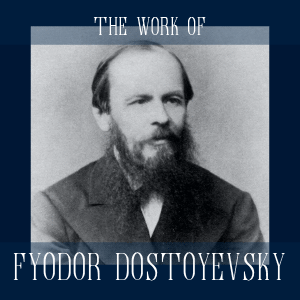
Leave a Reply
2 Comments on "The Hunchback of Notre Dame: How the Book and Movie Differ"
Just finished the movie and wanted a synopsis of the differences from the novel. This was a great read!
Thanks! I’m glad you enjoyed the article. 🙂